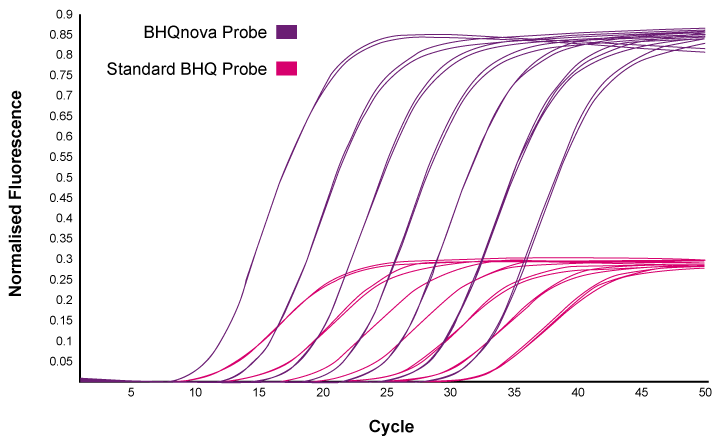BHQnova™ Probes are double-quenched hydrolysis probes with enhanced quenching and greater signal-to-noise ratio for long probes (>25 bases). Such probes consist of a 5' fluorophore dye, a 3' Black Hole Quencher (BHQ), and an internal nova quencher integrated between base residues 9 and 10.
 |
|
Image credit: LGC Biosearch Technologies
|
When a longer probe design (>25 bases) is necessary, such as achieving a desired melting temperature (Tm) in an AT-rich target region, the increased distance between the fluorophore and quencher in standard end-labeled probes may result in reduced quenching efficiency.
In double-quenched BHQnova Probes the nova quencher is closer to the fluorophore which serves to enchance quenching efficacy. A higher quenching efficiency lowers background fluorescence and enhances assay sensitivity.
Advantages of BHQnova Probes
- Higher signal-to-noise ratio: Double-quenched BHQnova probes have lower background fluorescence, leading to greater signal-to-noise ratios.
- More efficient quenching: Enhanced quenching of long probes, such as those developed in AT-rich regions.
- Increased sensitivity: Enhanced assay sensitivity in multiplex reactions.

qPCR amplification curves comparing a BHQnova probe (red) and a standard end-labeled probe (black) of the same 35-base sequence. The normalized amplification data illustrates the dramatic improvement in signal response. Image credit: Biosearch Technologies